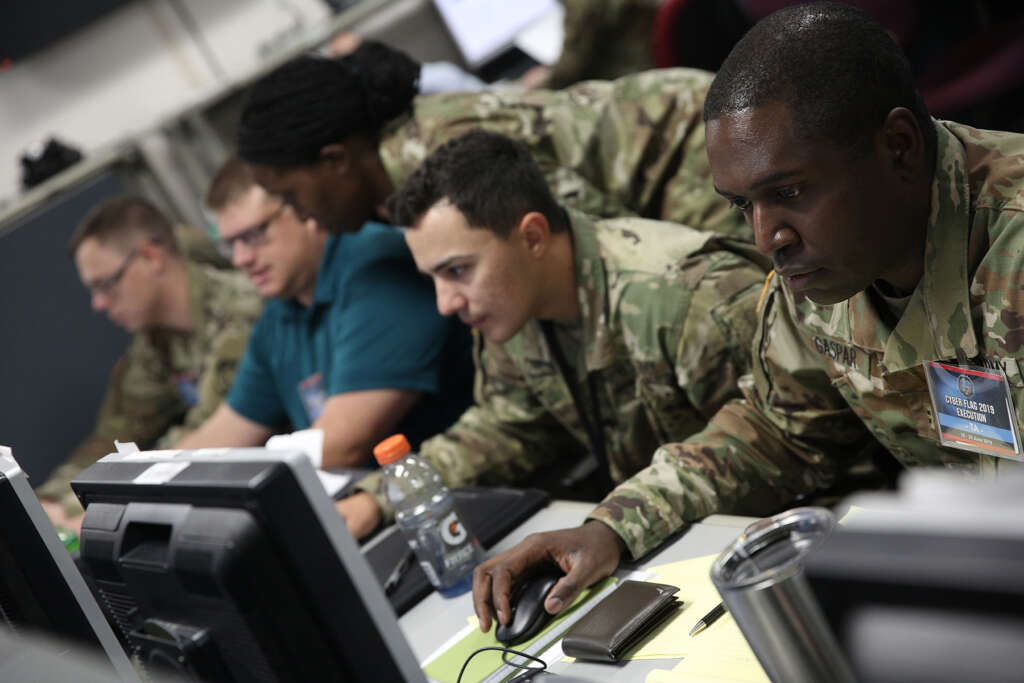First Army Data Summit focused on building data literacy, community

Federal Monthly Insights — Unleashing Data Insights to Drive Government Innovation — Aug 7, 2024
https://federalnewsnetwork.com/wp-content/uploads/2024/08/080724-NEO4J-MARKOWITZ-FULL.mp3Download audio
The Army is trying to build a data community across its enterprise. But that’s no small task for such a large organization with so many disparate, specialized components. That’s why it held its first Army Data Summit in May at Army Forces Command in Fort Liberty, North Carolina.
One subject the Army Data Summit focused on was how to spread data literacy across the Army. And according to Army Chief Data and Chief Analytics Officer David Markowitz, it’s easier to train an Army specialist like a logistician, intelligence officer or artilleryman on data practices than it is to take a data specialist, and embed them in specialized Army components.
“My challenge as the Army CDAO is to create a community space where we can work together and work as a team,” Markowitz said on Federal Monthly Insights — Unleashing Data Insights to Drive Government Innovation. “But still, folks have their local identity, so they understand their local issues, their mission issues, and they can bring their mission issues to the forefront. But as a community, we can help each other, so the intel officer can help the logistician who can help the finance person with techniques. And so that is our challenge, is to have the best of both worlds, and our first Army summit was to get at that issue of building that community space.”
The key differentiator, Markowitz said, is that the local specialists know the questions that need to be answered by the data to plan better and make better decisions. They also know the processes that generate the data. To further support that dynamic, the Summit also resulted in the creation of what Markowitz called “command chief data officers,” who stand at the junction between command and the end user, to translate between the two what data is useful where. Because most local data isn’t valuable to the rest of the enterprise, but end users may need access to some command-level data.
“So, we’re trying to make sure that marketplace between consumer and supplier is greased and we’ve got the right folks to build on it,” he said on The Federal Drive with Tom Temin.
That’s also facilitating a task that Markowitz said he’s concerned with: determining whether or not he’s meeting the end users’ needs for data. One thing he said he looks at to determine that is the rate of new analytics products being produced. That number is rising, he said, at a rate of around 600-700 new products per week. Some of those are altered versions of old products, but others are new. And he said they’re getting 12,000-13,000 requests per day for data exports through application programming interfaces (APIs).
AI applications
All that data is also being used to feed artificial intelligence applications, which is something Markowitz said the Army is still trying to come to grips with. He said it’s got a long history with certain types — ones directly associated with lethality decisions, like independent musicians and smart mines; and platform-specific applications, like self navigation on unmanned vehicles — but newer, commercially available models like generative AI have varying degrees of applicability to the Army’s mission.
“What we are currently exploring is how applicable those tools are? Can they easily be lifted or they need a lot of self training? And what’s hard for us to grasp right now is the full cost model. It’s easy to get a platform that’s available, but all of a sudden it’s like an in-store app,” he said. “You start purchasing content and understanding cost control, where you can really blow your own budget in a short amount of time and not realize it. So, how do you put that type of visibility on not only quality of the answer, but also have cost control?”
One answer to that is to put responsibility for the AI application’s output on the user, he said. But the big question is whether an application is worth the cost, the labor and the training.
“Most of the time, we’re finding it’s a nuanced discussion between how much we want to invest in training a tool versus people and labor and what’s the right mix between the two,” Markowitz said. “It’s often not a one or the other. It’s how do you get the best tooling with the best people?”The post First Army Data Summit focused on building data literacy, community first appeared on Federal News Network.
Welcome to Billionaire Club Co LLC, your gateway to a brand-new social media experience! Sign up today and dive into over 10,000 fresh daily articles and videos curated just for your enjoyment. Enjoy the ad free experience, unlimited content interactions, and get that coveted blue check verification—all for just $1 a month!
Account Frozen
Your account is frozen. You can still view content but cannot interact with it.
Please go to your settings to update your account status.
Open Profile Settings